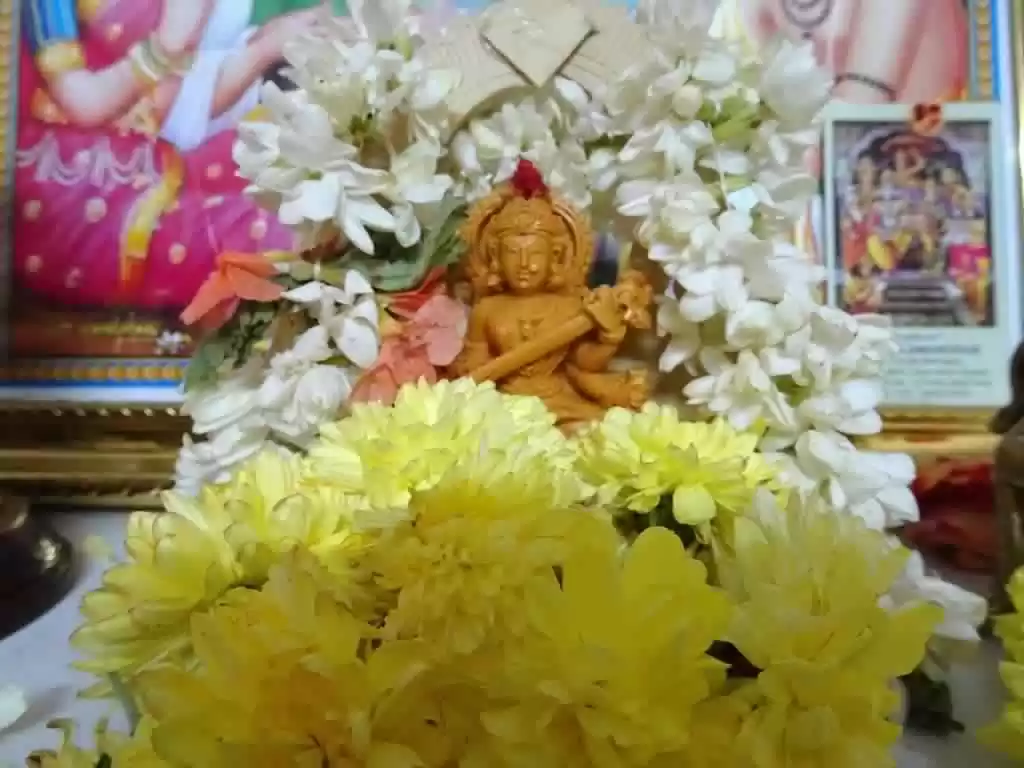
No, we ain't kidding and here's why!
Navaratri – a nine-day festival celebrated with great enthusiasm and devotion by Hindus all over the world is derived from the Sanskrit words 'nava' meaning nine and 'ratri' meaning night. This festival is celebrated twice a year, once in the month of Chaitra (March-April) and once in the month of Ashwin (September-October).
The festival that is dedicated to the worship of Goddess Durga and her nine forms is also known as Navadurga. The nine forms of Durga worshipped during Navaratri are Shailputri, Brahmacharini, Chandraghanta, Kushmanda, Skandamata, Katyayani, Kalaratri, Mahagauri, and Siddhidatri. Each day of Navaratri is dedicated to one of these nine forms of Goddess Durga.
In Southern India, Navaratri is celebrated with the same fervor and devotion as in other parts of India. However, the traditions and customs associated with the festival are unique to the region. The festivities in Southern India begin with the decoration of homes and temples with flowers and lights.
Kerala

In “God’s own country” Navratri is celebrated with Goddess Saraswati at the centre of celebrations as she represents knowledge, with, especially on the last three days.
Ayudha Puja also known as Astra Puja, Ayudha Puja, and Saraswati Puja is a Hindu festival that is celebrated in the southern Indian state of Kerala where vocational tools are worshipped. This festival is considered to be a way to express gratitude to the tools and equipment that help people make their livelihood. People also seek the blessings of the goddess Saraswati, who is considered to be the goddess of knowledge, learning, and wisdom. The word "Ayudha" means "weapon" or "tool," and "Puja" means "worship." On this day, people clean and decorate their tools and instruments with flowers, turmeric, and other auspicious items.
In some parts of Kerala, Ayudha Puja is also considered to be an auspicious day to begin new ventures or start new businesses. The day is also marked by feasting and exchanging gifts with friends and family.
A ritual is performed where children are introduced to the world of knowledge and learning by writing letters on a plate of rice. This is known as Vidyarambham. This tradition is practiced at significant worship centers in Kerala, such as the Guruvayur Sree Krishna Temple in Thrissur, Thunchan Parambu in Malappuram, and Attukal Bhagavathy Temple in Thiruvananthapuram.
Tamil Nadu

In Tamil Nadu, Navaratri is celebrated with great enthusiasm and devotion. The festival is known as Navarathri in Tamil and is observed by decorating homes with colorful kolams (rangolis), setting up golu (display of dolls and figurines) and performing various traditional rituals and poojas.
One of the unique aspects of Navaratri celebrations in Tamil Nadu is the golu or kolu tradition, where people set up a display of dolls and figurines in their homes. The dolls are usually arranged in a specific order, with the deities placed at the top, followed by scenes from everyday life and social customs. The fabulous presentation of Golu dolls that depict mythological characters include animals and people, in all temples and many households. The celebrations start by setting up these Golu dolls on a makeshift staircase called Kolu. These days Golu dolls are created to bring focus to different issues of the world. The most unique celebration happens at Mutharamman Temple in Kulasekharapattinam where the devotees visiting the temple dress in their choice of avatars especially different forms of devi.
The most famous Navaratri celebrations in Tamil Nadu take place at the Madurai Meenakshi Temple, which is decorated with colorful lights and flowers during the festival. On the ninth day of Navaratri, which is also known as Vijayadashami, people perform the Saraswathi Puja, where they worship the goddess of knowledge, Saraswathi. It is a customary practice for children to keep their books and musical instruments in front of the goddess to seek her blessings.
Karnataka

Dussehra or Vijayadashami which is celebrated to mark the victory of good over evil, is a major festival in Karnataka that is celebrated with great enthusiasm and fervor. The dolls are usually arranged on a stepped platform, with the deities at the top and other dolls representing scenes from everyday life and culture on the lower steps. The dolls are often dressed in traditional clothing, and the displays may also include miniature furniture, utensils, and other household items.
One of the most famous places to witness Dussehra or Vijayadashami is the 400-year-long traditional Dussehra celebrations in Mysore, Karnataka, where the festival is celebrated on a grand scale. The Mysore Palace is beautifully decorated with lights and is illuminated for the ten-day celebration. The palace is also open for the public to visit during this time.
The main attraction of the Mysore Dussehra celebration is the grand procession called "Jumbo Savari" which is held on the tenth day of the festival. In this procession, a beautifully decorated idol of the Goddess Chamundeshwari is taken on an elephant, which is followed by many other floats and cultural groups showcasing the rich culture of Karnataka.
Apart from Mysore, Dussehra is celebrated in many other parts of Karnataka as well, including Bangalore, Hubli, Dharwad, and Hampi.
Think we missed out on something? Tell us about it in the comments below. Or write about it here on Tripoto and earn Tripoto Credits!
Explore the best of travel inspiration on Tripoto Instagram!


























